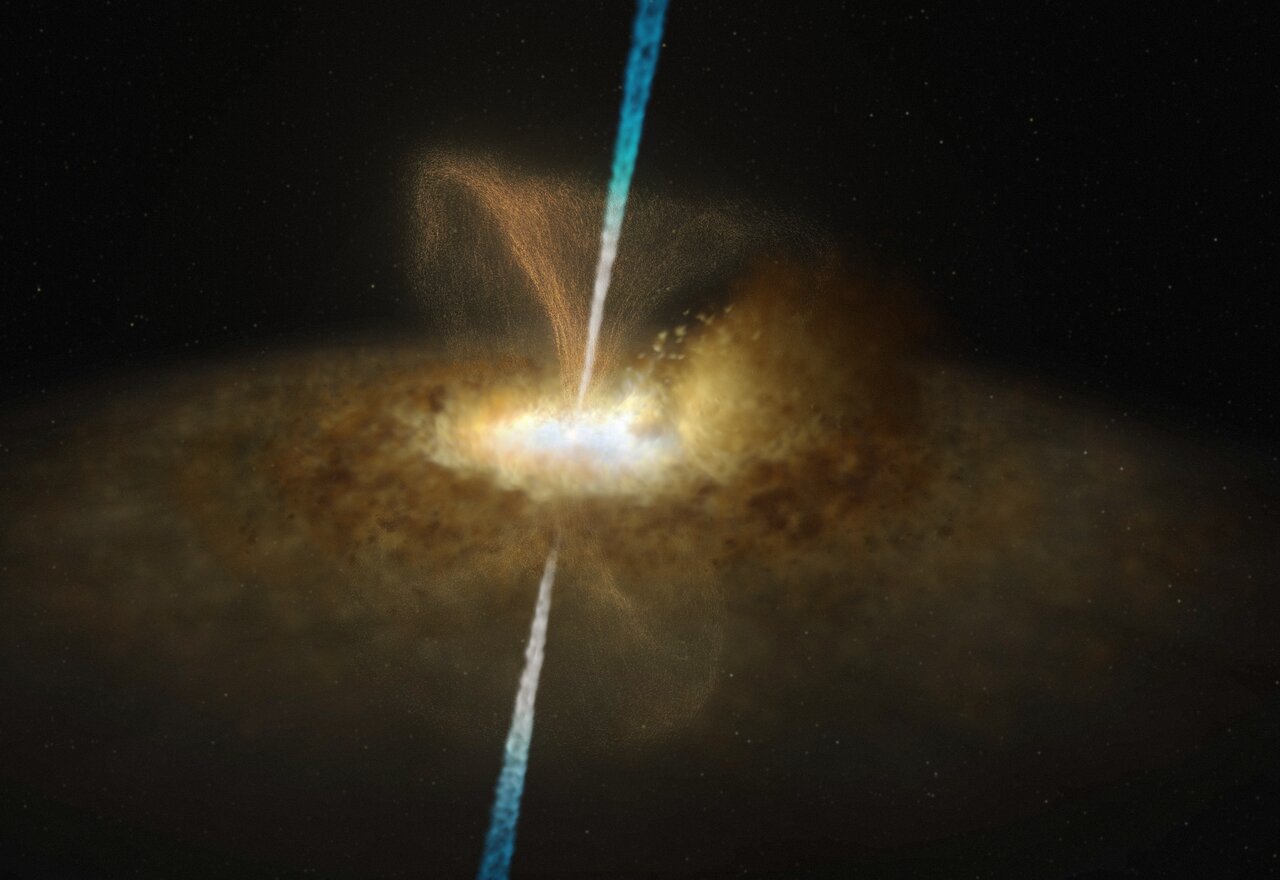News release
From:
Astronomy: Confirming the ‘unified model’ of active galactic nuclei (N&V) *IMAGES*
Observations of the dense, obscuring dust surrounding a central black hole in a nearby galaxy provide confirmation of the unified model of active galactic nuclei. This conclusion is made through the analysis of high-resolution images of the galaxy, published in Nature this week. The images offer new opportunities to study active galactic nuclei.
Active galactic nuclei are energetic regions at the centre of some galaxies, thought to be powered by supermassive black holes. The light emitted by such nuclei produces spectral features relating to the region from which the light is emitted; distinct spectra have been used to split active galactic nuclei into two categories: type 1 or type 2 objects. However, the unified model suggests that this distinction arises because the line of sight may sometimes be obscured by a dusty torus-shaped cloud surrounding and feeding the central black hole.
Violeta Gámez Rosas and colleagues report observations that support this unified model. They obtain high-resolution images of the archetypal galaxy NGC 1068, from which the unified model was first established. They use an instrument called MATISSE, which combines the light of four European Southern Observatory telescopes, to get the best view of the active galactic nuclei. The analysis of the images and radio maps reveal the torus-shaped dust cloud and help to define its properties, which match those expected by the unified model. The authors also pinpoint the location of the black hole below the torus, which also fits the model.
Robert Antonucci, who helped to create the unified model, writes, “we can celebrate the fact that Gámez Rosas and colleagues’ study is the best proof yet that the unified model is correct,” in an accompanying News & Views article.



 Australia; International; NSW
Australia; International; NSW



